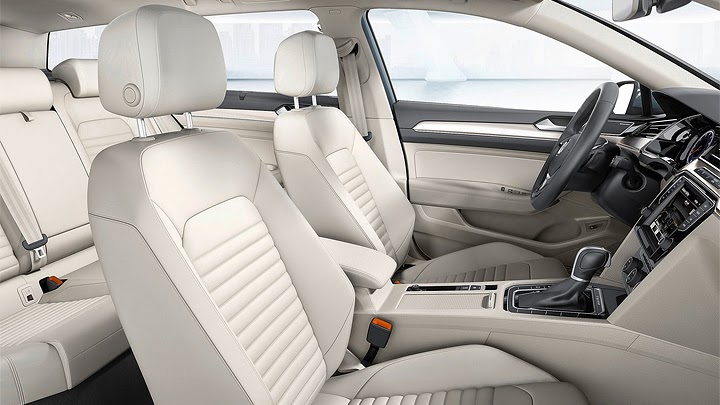
Even though most people associate “Volkswagen” with “Golf”, in a first moment, the truth is Passat deserves the same amount of importance, if not more. Despite both models have amassed four decades of an almost constant improvement, the latter also represented a permanent challenge for its company. Passat appeared as its very first bet among luxury cars, and managed to achieve a level of success that most other generalist brands, like Peugeot or Nissan, would love to equal. Sure, no one who can afford 3-Series, A4 or C-Class just as easily would choose a Passat, but this is a matter of brand prestige. When it comes to the product’s overall quality, VW’s car is just as competent as others like those, at least in most trim levels.
Part of having such smaller prestige comes from the design. Passat has always been that car which looks amazing from every angle you see, featuring very well elaborated elements, adequate proportions of light and shadow and avoiding pretty much any excesses, such as too many chrome inserts, too big plain sheetmetal, too small wheels, etc.. And yet, it just never stands out. Passat is not the car to buy if you want to turn necks wherever you go – not like the aforementioned sedans, for instance. However, those who know the car’s history can respond by saying this was actually made on purpose. If you want flashy design, exotic colors and ostensive engine sound, you will have to look elsewhere. This, like you have already read, is a typical German car.










Being as such, you should not get surprised with the fact that Passat repeats VW’s current design language. Up front, it features the same horizontal front grilles, the same convergent hood creases and the same high-tech headlights – Xenon lamps were dropped this time, in favor of halogens or LEDs. The rear uses discreet bumpers and license plate areas in order not to fight for attention with the irregularly-shaped lights. And the sides display a more elegant version of what was seen in the previous two generations. The truly impressive evolution, though, is that Passat shares those with the other VWs without resembling them. Take a look at the latest Golf Variant, Jetta or Touareg, for instance: Passat reminds of them, but not to the point of being mistaken for them anymore.
If you have already started to like this car for its exterior, opening its doors will render you crazy. The materials are much better and the design is as simple and objective as always, but the latter one got a very interesting twist: VW allowed itself a moment of inspiration and merged the air vents into a styling item. Looking so much retro is what makes it interesting in such a modern vehicle. By the way, this is totally unrelated to the North-American Passat, by the way. For the European, other great news start with the fact that Passat managed to have its internal space increased despite having the external dimensions reduced. That is only the first benefit of what must be the new Passat’s most predictable component: the MQB platform.





The others include increased use of high-strength steel, which aided to a 84-kg weight reduction, and a bundle of technology items, like LED tail lights whose pattern changes from horizontal to vertical while braking, in order to take more attention from other drivers. Besides, you can equip it with head-up display, rear-seat entertaniment packages, fully-digital instrument cluster (like that of Audi TT), more advanced connectivity, trailer assist and autonomous driving functions: Emergency Assist tries to wake the driver, if an unsafe behavior is detected, and in case of failure brings the car to a safe and complete stop. Automatic Cruise Control can drive the vehicle in stop-start traffic jams, and Park Assist now accepts 90° spots.
Passat will offer ten engine options, distributed according to the country. The diesel range counts on a TDI 2.0L, whose four cylinders can reach 148 hp, 187 hp and 236 hp, and will receive a TDI 1.6L shortly after the launch. Switching to gasoline, the TSI 2.0L is good for 280 hp, but it will be joined by a refreshed 3.0L VR6 and the TSI, 156-hp 1.4L, this one combined to a 109-hp electric engine in a plug-in hybrid option which reaches a maximum of 211 hp. There is no official information for its secondary versions yet, like the new CC and North-American Passat. But those who would like to spice the European Passat a little will have to settle for a R-Line accessory kit, at least for now. This car will hit the streets already as sedan and Variant.